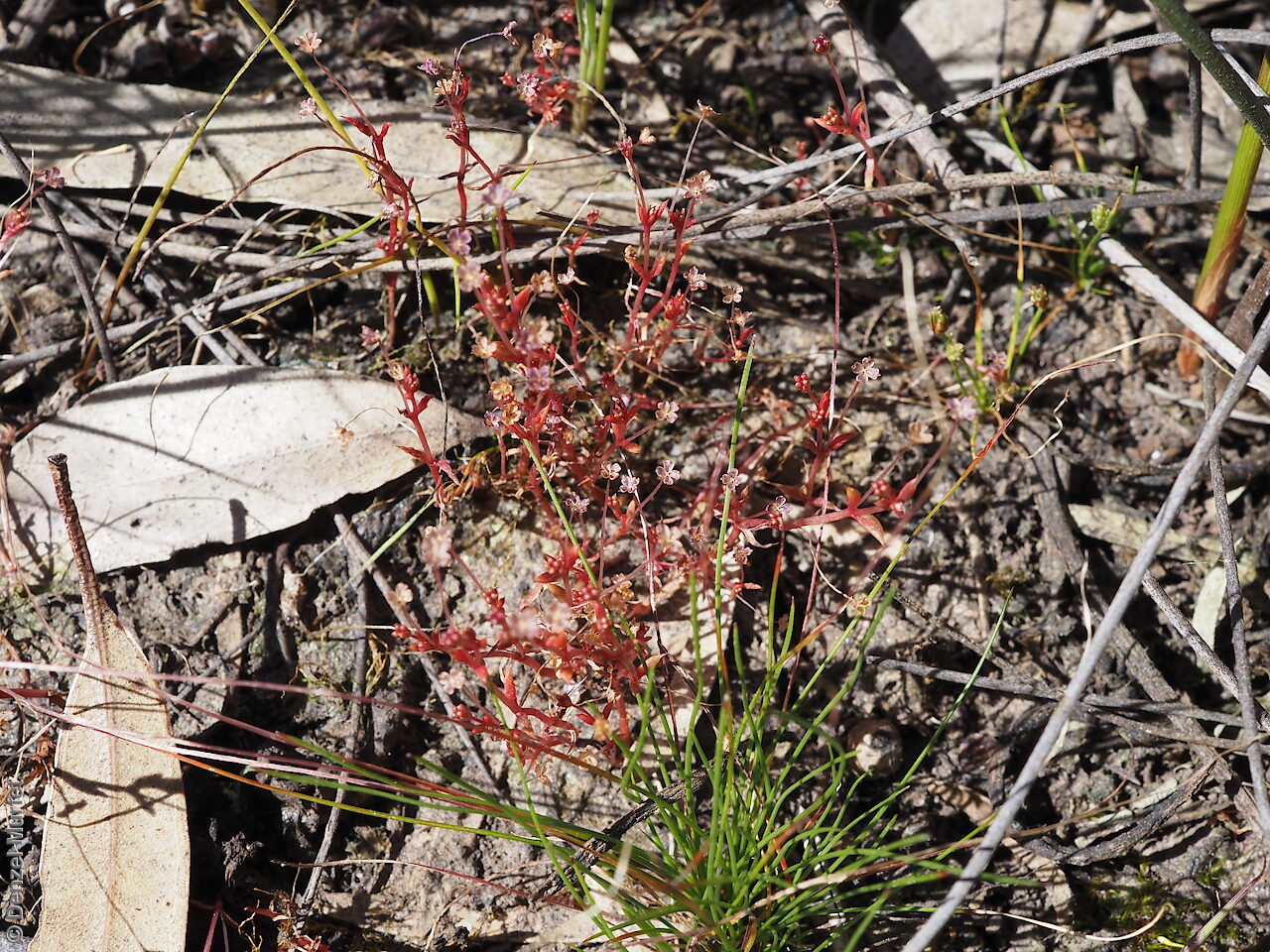
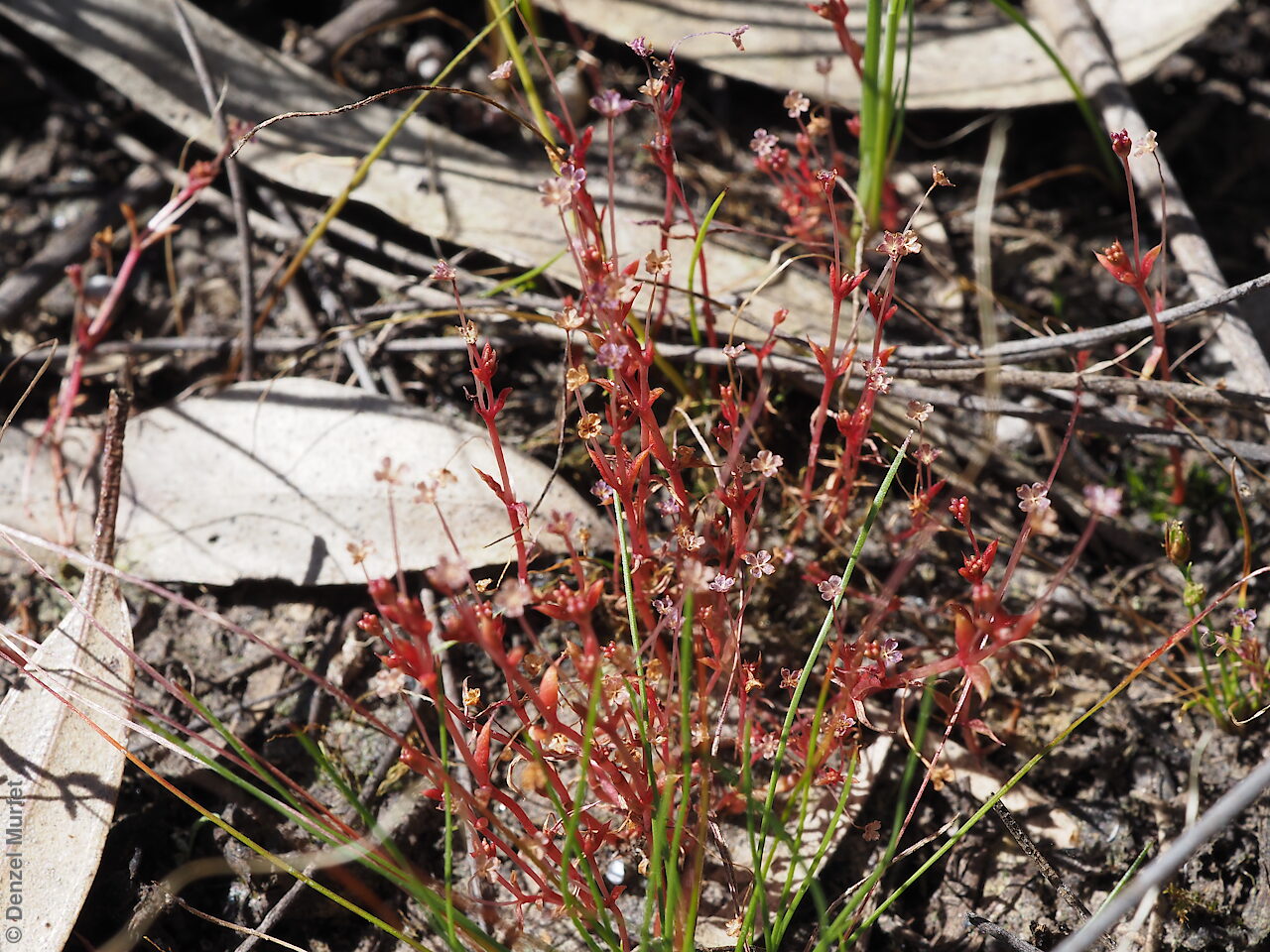
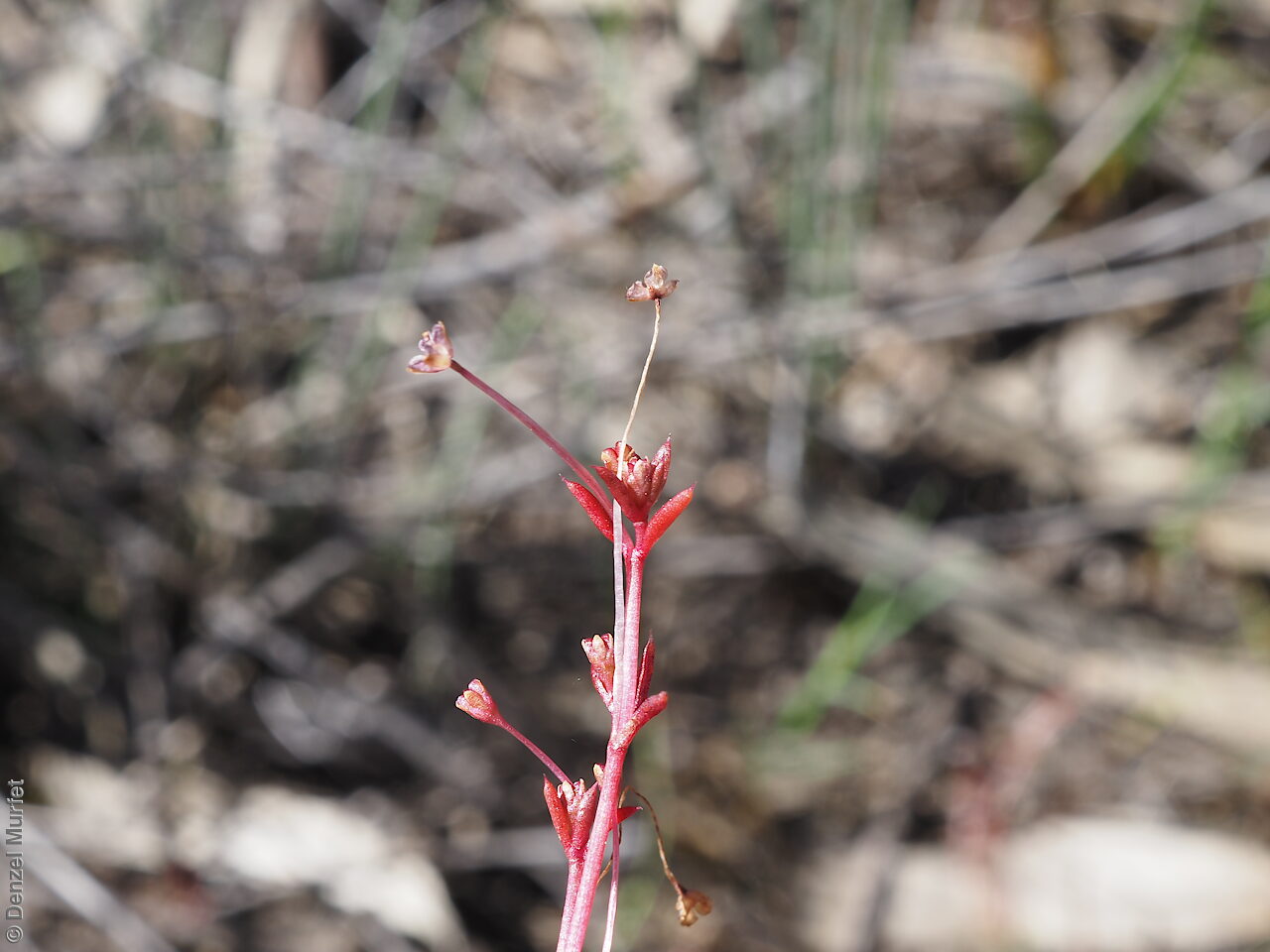
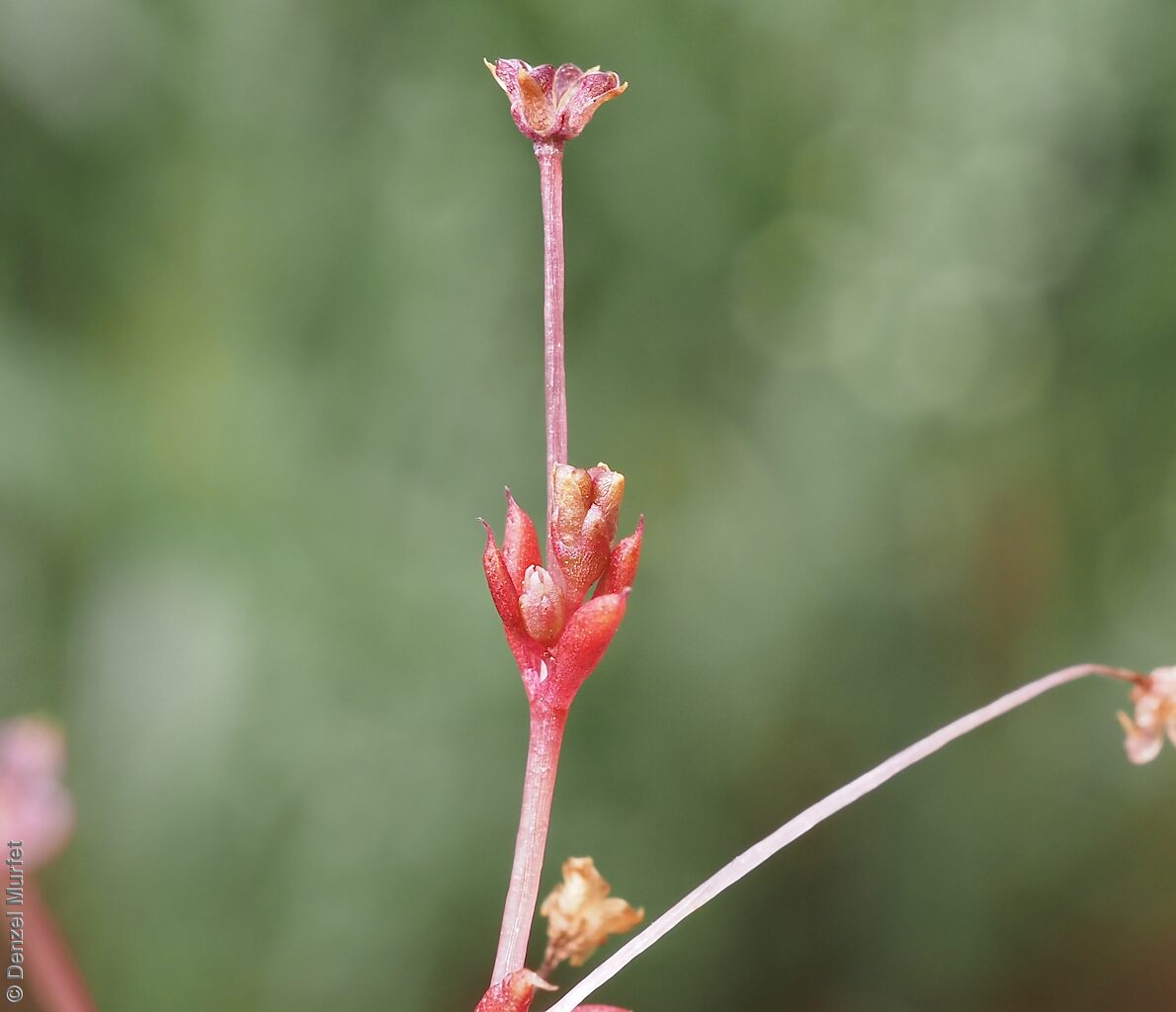
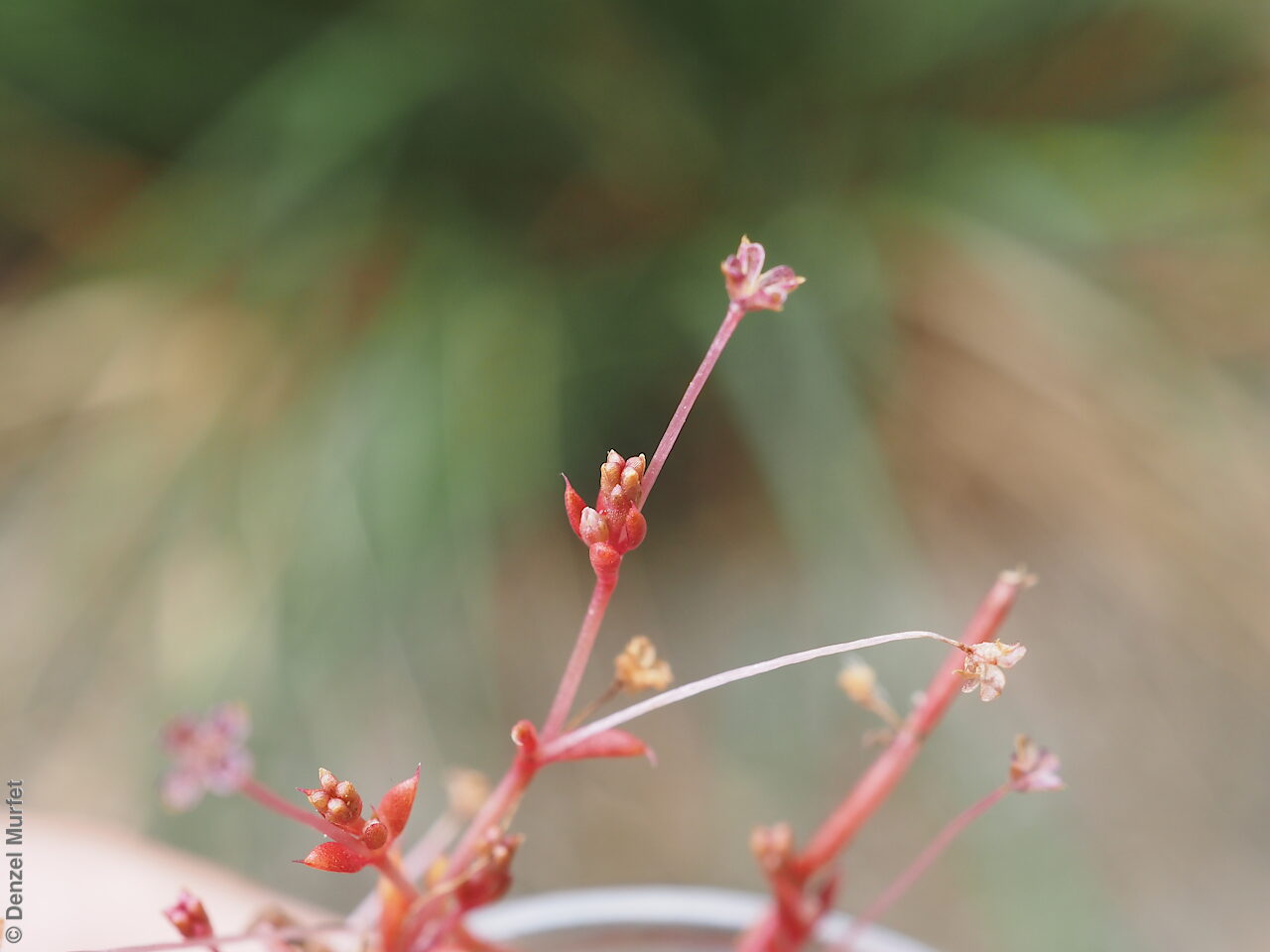
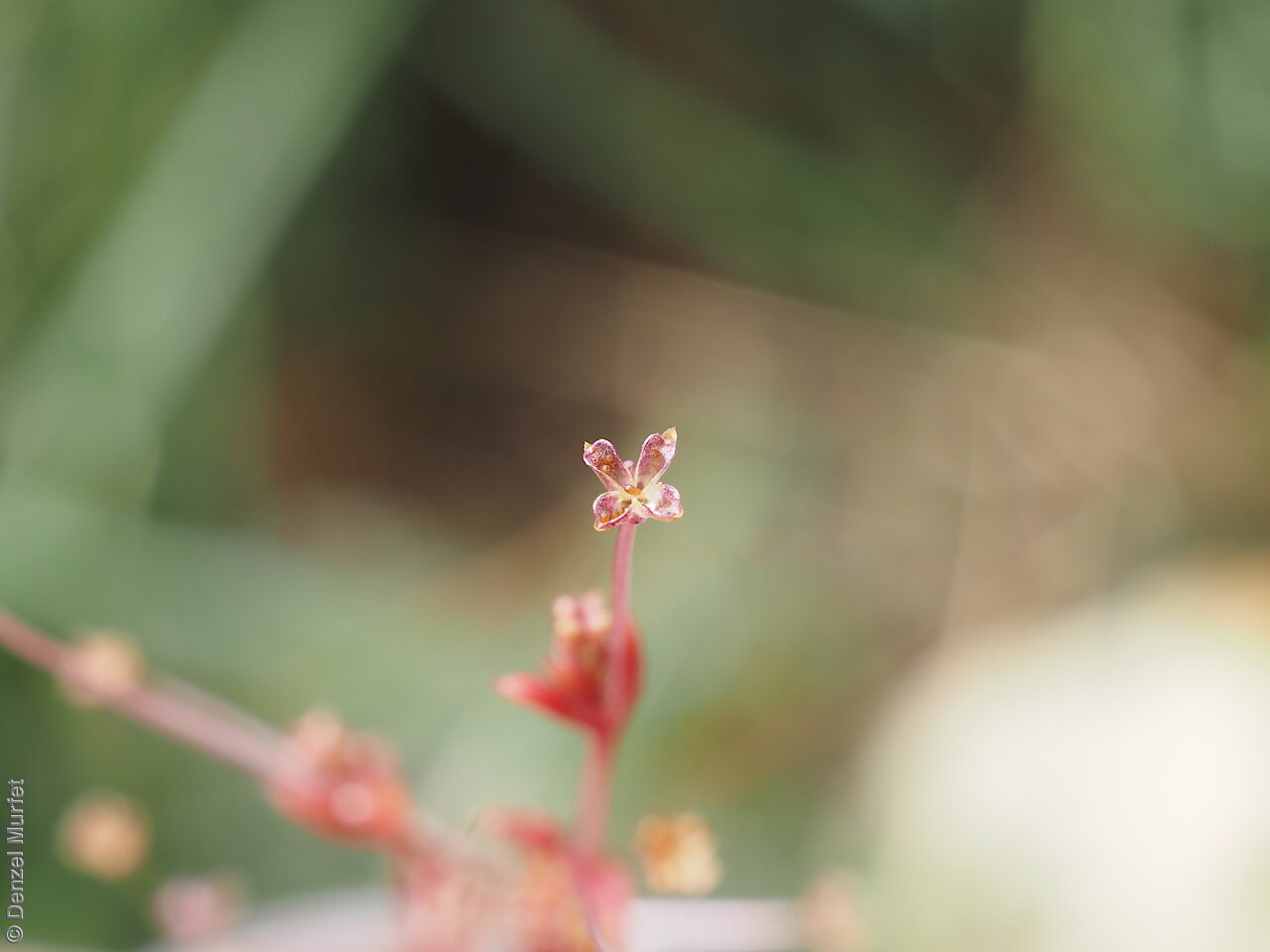
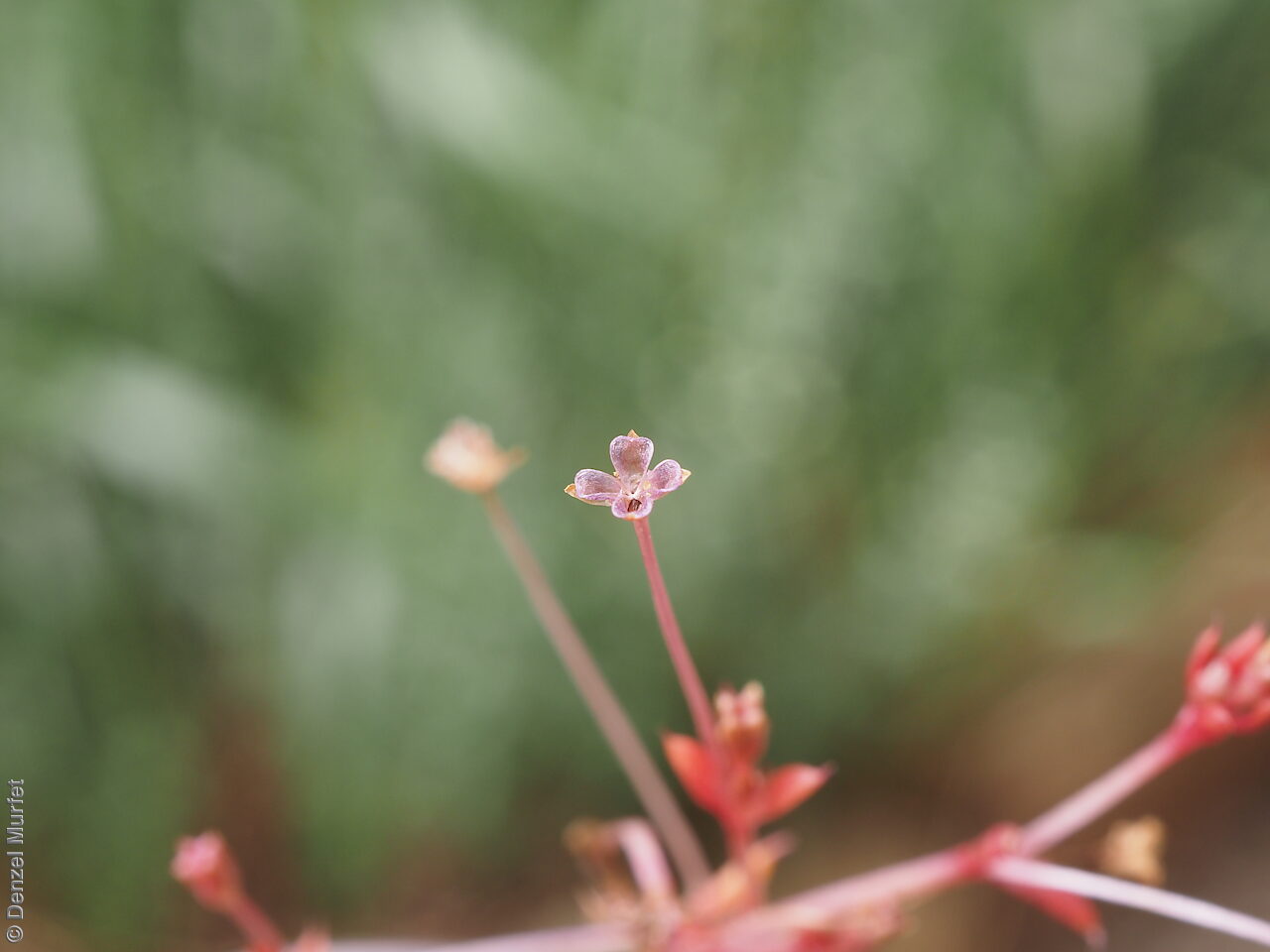
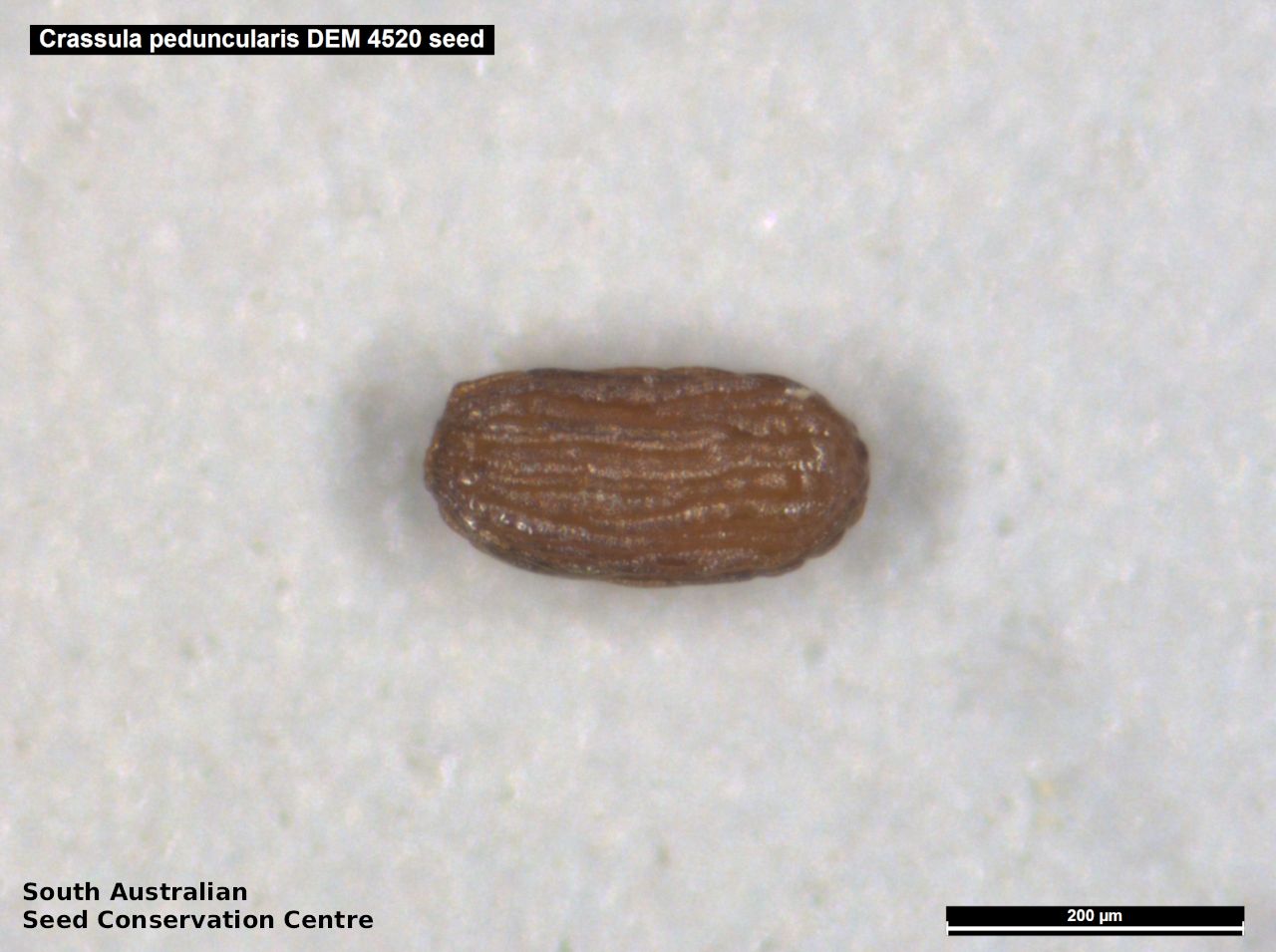
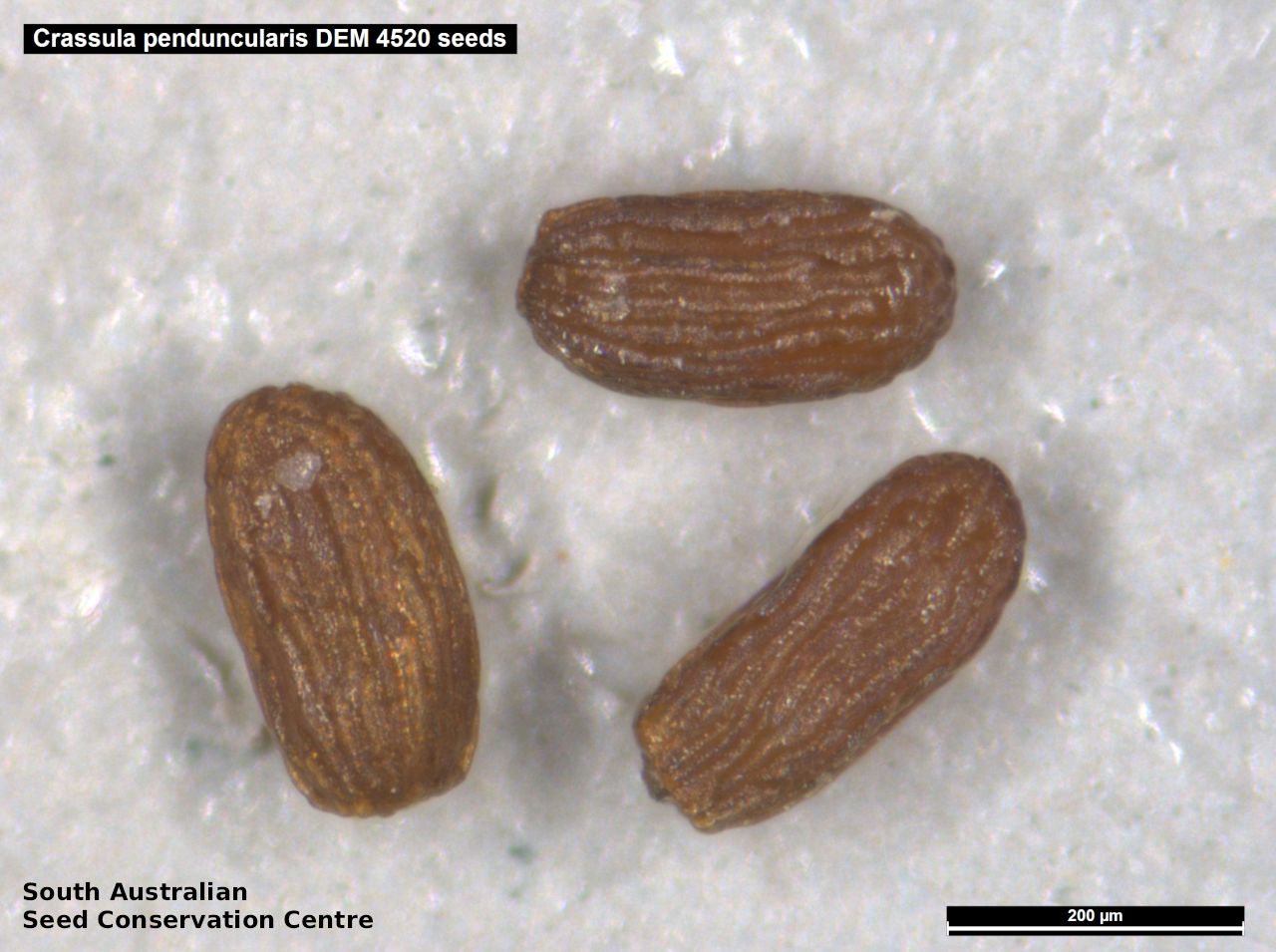
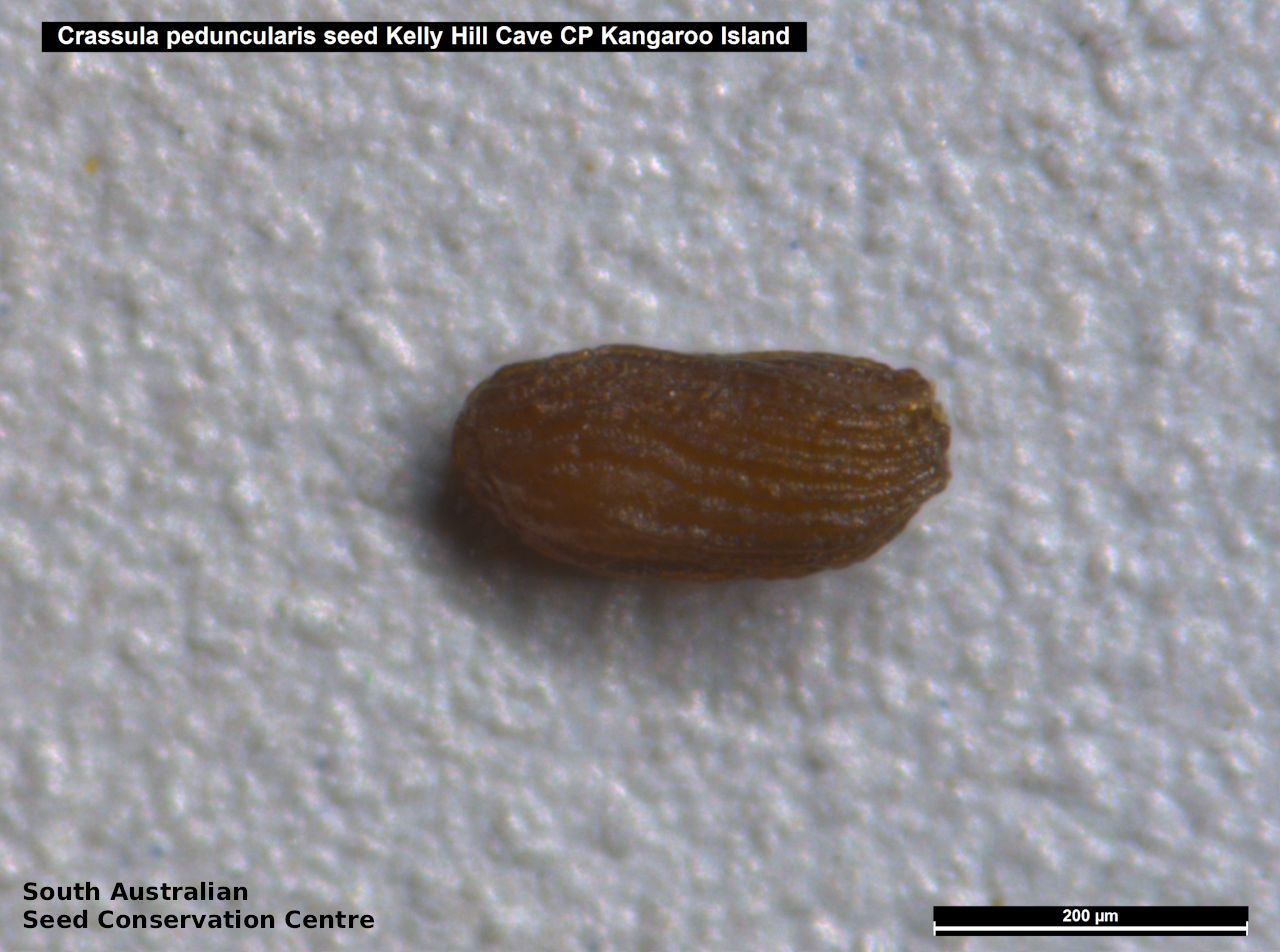
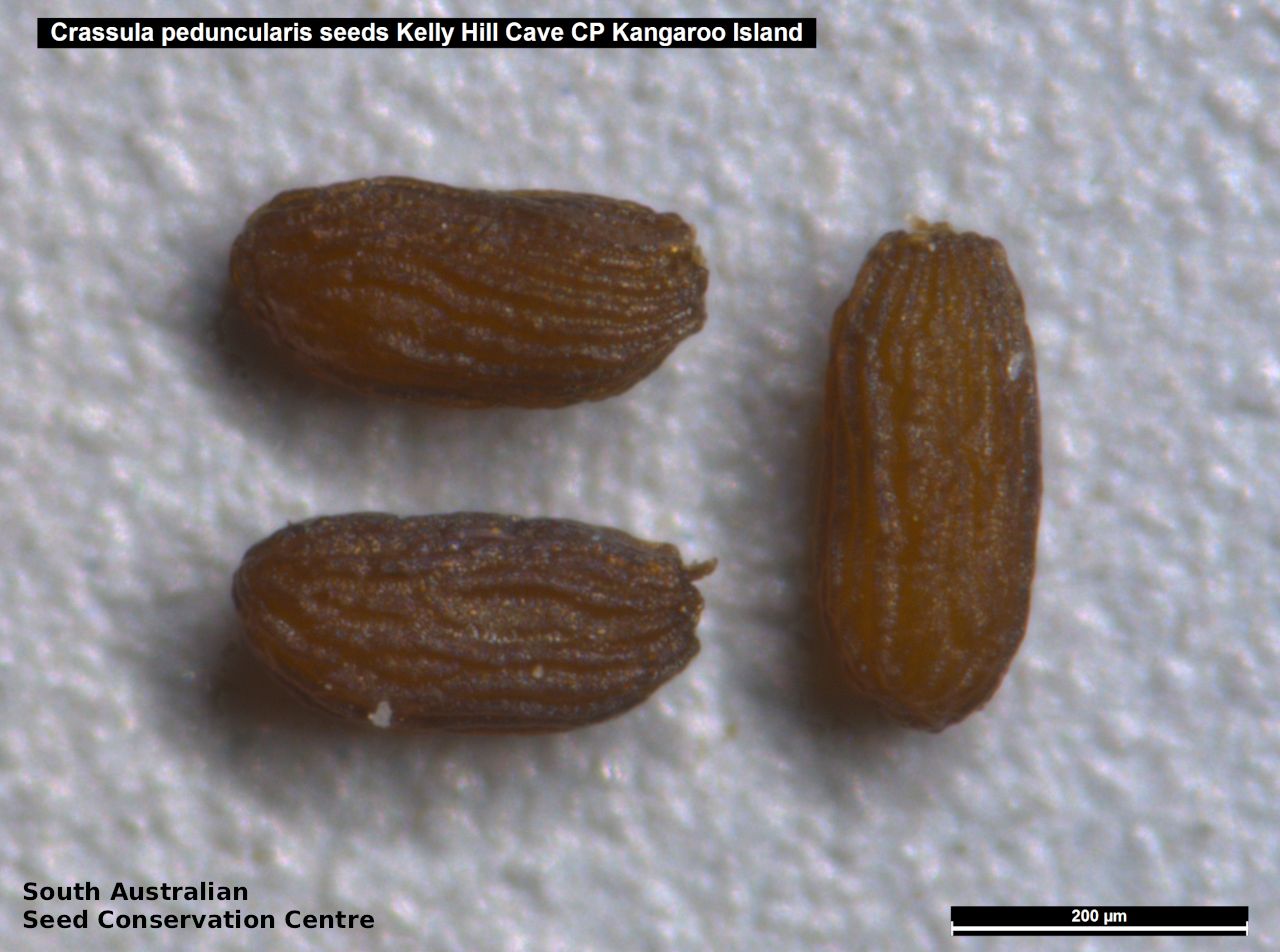

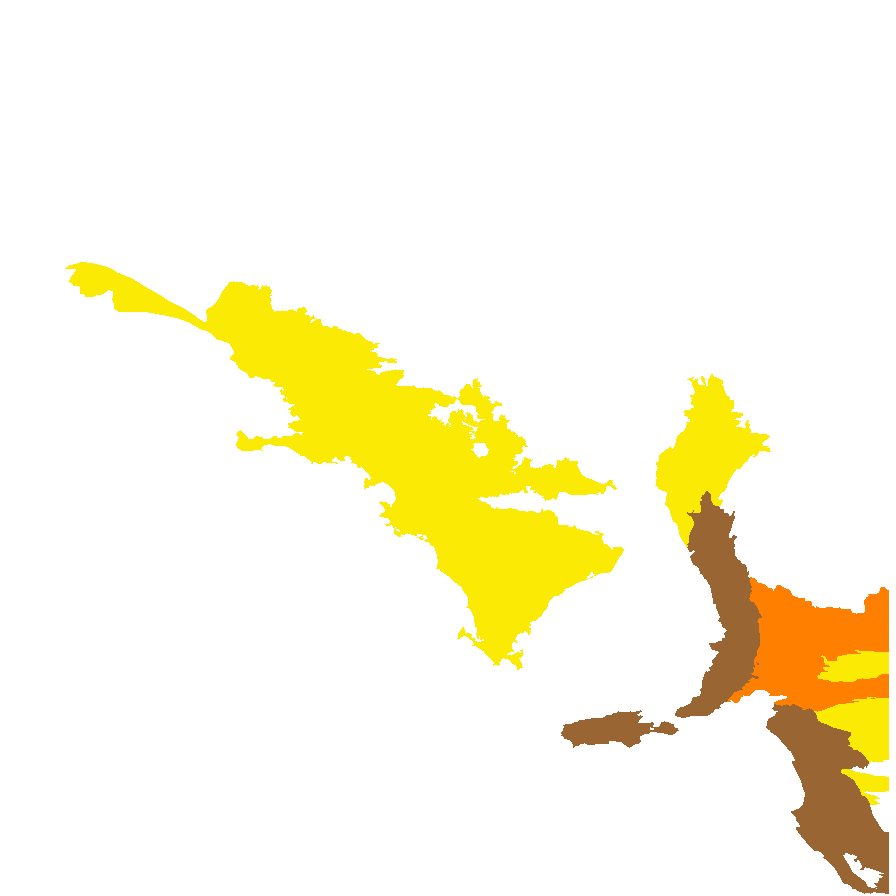
Botanical art
Prior names
Tillaea peduncularis
Tillaea purpurata
Crassula bonariensis
Crassula purpurata
Common names
Purple Stonecrop
Purple Crassula
Etymology
Crassula the diminutive of the Latin 'crassus' meaning thick, alluding to the fleshy leaves and branches. Peduncularis from Latin meaning flower-stalk, referring to its long flower stalk.
Distribution and status
Found scattered across the part of southern South Australia the Eyre Peninsula, Flinders Ranges to the South-east, growing on mud around standing water, often associated with rock pools. Also found in all states except in the Northern Territory. Native. Uncommon in South Australia. Rare in Queensland. Common in the other States.
Herbarium regions: Flinders Ranges, Eyre Peninsula, Northern Lofty, Murray, Southern Lofty, Kangaroo Island, South Eastern, Green Adelaide
NRM regions: Adelaide and Mount Lofty Ranges, Eyre Peninsula, Kangaroo Island, Northern and Yorke, South Australian Arid Lands, South Australian Murray-Darling Basin, South East
AVH map: SA distribution map (external link)
Plant description
Erect or decumbent annuals or short-lived herbs with fleshy, pinkish white, white to purple stems to 6 cm long, often rooting at nodes, usually forming dense cushions. Leaves linear-lanceolate, to 4.5 mm long and 0.6 mm wide, fleshy, dark green, yellow-green to pink, flattened above, convex beneath. Inflorescence with single flower in the axils of leaf-like bracts on a pedicels elongating to 10 mm long when fruiting. Flowering between August and October. Fruiting capsules smooth, recurving at the apex, splitting along the whole length and opening up so widely that they are easily confused with the slightly smaller petals. Seeds are tiny brown oblong to 0.3 mm long and 0.1 mm wide, with several longitudinal ridges.
Seed collection and propagation
Collect seeds between September and November. Collect whole plants that are drying off, turning red-brown with mature fruit-spikes. These will contain very small brown seeds when rubbed with your fingers. Place the plants in a tray and leave to dry for two weeks. Then rub the plants gently by hand or with a rubber bung to dislodge the seeds. Use a sieve to separate the unwanted material. Be very careful as the seeds are very small. Store the seeds with a desiccant such as dried silica beads or dry rice, in an air tight container in a cool and dry place. Seed viability is usually high.
| Location | No. of seeds (weight grams) | Number of plants | Date collected | Collection number Collection location | Date stored | % Viability | Storage temperature |
|---|---|---|---|---|---|---|---|
| MSB | 11,000 (0.06 g) | 1-Dec-2006 | RJB70943 Southern Lofty |
Number of plants: This is the number of plants from which the seeds were collected.
Collection location: The Herbarium of South Australia's region name.
% Viability: Percentage of filled healthy seeds determined by a cut test or x-ray.